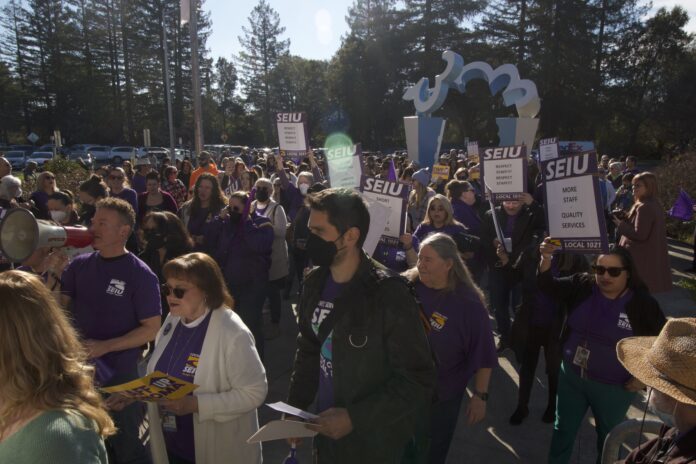With inflation eating away at their pension benefits, some Sonoma County employees and retirees are feeling the squeeze.
At a Feb. 7 Board of Supervisors meeting, current and former employees urged the county’s top elected officials to help.
During the meeting, Bill Robotka, a member of Sonoma County Association of Retired Employees’ board of directors, who retired from a county job in 2000, said that, of the roughly 5,200 current county pension recipients, over 2,000 receive less than $2,000 per month.
Inflation has many workers and retirees struggling with high costs these days, but former employees of Sonoma County have a unique problem among Bay Area public servants. That’s because, unlike all other nearby county pension funds, Sonoma County Employees’ Retirement Association does not offer a baked-in inflation protection. Many other pensions offer a 2% per year automatic cost-of-living-adjustment—COLA—which helps pensioners keep up with rising costs.
Over the course of a worker’s retirement, the lack of an automatic inflation protection adds up to a lot of lost value.
According to a UC Berkeley Labor Center report released in late January, “Current SCERA retirees who began to collect benefits in 2000 have lost 42% of their pension to inflation. Between the beginning of the COVID-19 pandemic in March 2020 and November 2022, SCERA retirees saw their purchasing power decline by 13%.”
“It puts a large number of our pensioners or retirees under a lot of pressure, and it’s gonna get worse… We’re facing ever increasing prices. And frankly, a large number of our folks just cannot keep up,” Robotka, the retired county employee, said at the supervisors’ Feb. 7 meeting.
Instead of an automatic COLA, the Sonoma County Board of Supervisors, under certain conditions, has the ability to pass a one-time increase to SCERA benefits in order to match changes in cost of living. However, because of the way the current COLA rules are written, the supervisors have not done so since 2008. That’s leaving some retirees struggling to get by and likely causing some current workers to question whether they should stay with Sonoma County.
In an email, SCERA’s CEO Julie Wyne said that, “SCERA has been unable to recommend a COLA [to the Board of Supervisors] since 2008 and is unlikely to be able to recommend one in the future unless some policy changes are made.”
In December, with pressure mounting to revisit the issue, Wyne presented information about the history of the COLA at a meeting of the SCERA Retirement Board and announced the formation of a committee to study the history of the COLA policy and, possibly, recommend changes.
It is unclear when the committee will finish its work. Any changes will be made by the Board of Supervisors.
Asked about the possible policy changes allowing for more COLAs, Chris Coursey, chair of the Board of Supervisors and a member of the COLA study committee, said in an email, “[The decision to grant COLAs] would have significant financial implications for the county, and such a decision would need to be made in the context of understanding the fiscal impacts throughout the county budget. I support retiree COLAs, but a lot of fiscal study needs to be completed before I would be able to vote on this issue.”












Is this article a “one and done”, or will there be follow up inquiries into the lack of COLA for county employees? I want to see a deeper dive into the reasons behind why county employees in just one county in the entire state must endure a dwindling value to their pensions.
While this article says that a Cola was given in 2008, it failed to explain that it was given only to those who retired as of 1997 and earlier. No one retired since 1998 has ever gotten a COLA.